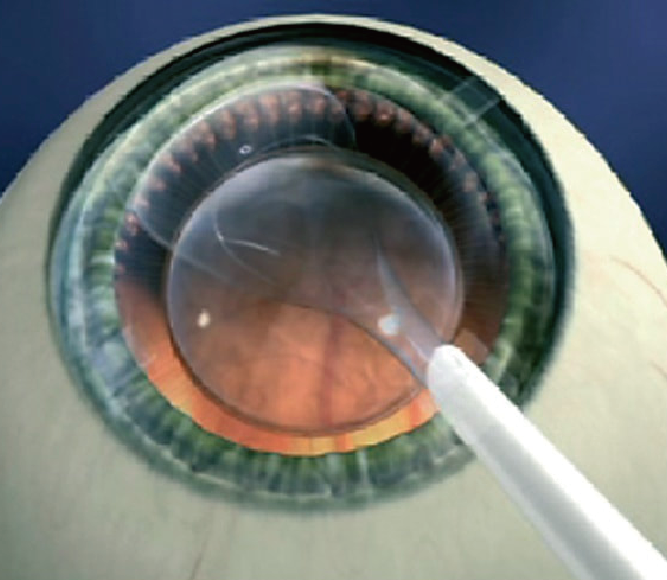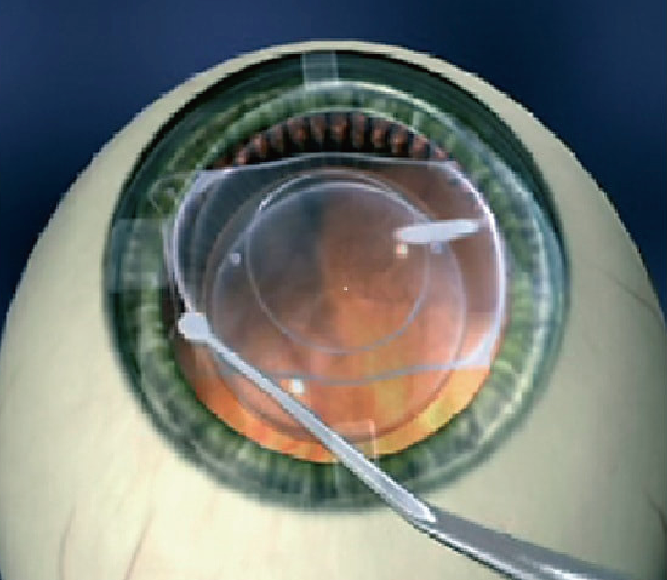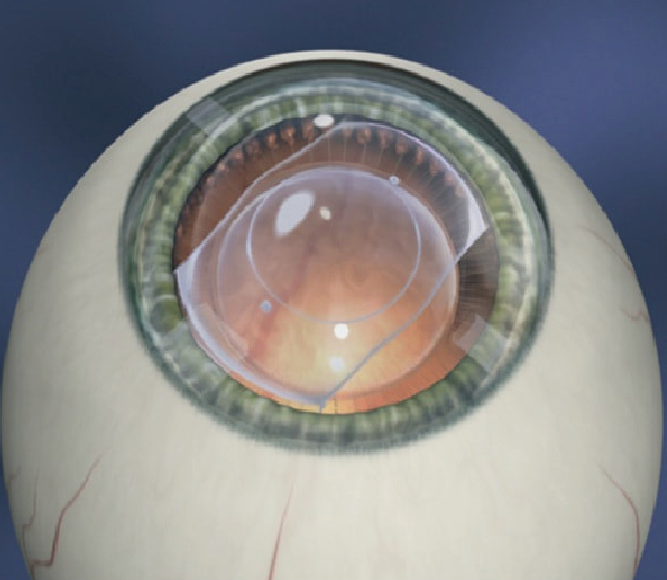ICL stands for Implantable Collamer Lens. It is a type of implantable lens used for vision correction. The ICL is made of a biocompatible material called collamer, which is a combination of a collagen-based material and a silicone-based material. It is designed to be implanted inside the eye, specifically between the iris and the natural lens.
ICL is primarily used to correct refractive errors such as myopia (nearsightedness), hyperopia (farsightedness), and astigmatism. It works by enhancing the eye's focusing power, providing clearer and sharper vision. Unlike traditional contact lenses, ICL is a permanent implant that does not require daily removal and cleaning.
The entire ICL implantation surgery is typically completed within one hour. The use of local anesthesia may cause slight discomfort during the procedure.
 Step 1: Administration of local anesthesia eye drops. |
 Step 2: Creation of a small incision above or below the eye. |
 Step 3: Implantation of the ICL lens between the eye's natural crystalline lens and the iris. |
 Step 1: Administration of local anesthesia eye drops. |
 Step 2: Creation of a small incision above or below the eye. |
 Step 3: Implantation of the ICL lens between the eye's natural crystalline lens and the iris. |
After undergoing the preoperative eye examination, the doctor will determine the suitable surgical options for you. You can also discuss with the doctor to make a decision together.
| SMILE PRO | SMILE | LASIK | ICL | |
|---|---|---|---|---|
| Degree of correction | Up to -10.00 diopters of myopia Up to -5.00 diopters of astigmatism |
Up to -15.00 diopters of myopia Up to +6.00 diopters of hyperopia Up to +6.00 diopters of astigmatism |
Up to -18.00 diopters of myopia Up to +10.00 diopters of hyperopia Up to +6.00 diopters of astigmatism |
|
| Technique | Cornea cutting; no need for cornea flap creation | Creation of corneal flap, followed by laser reshaping of the corneal inner layer beneath the flap | Implantation of ICL lens between the eye's natural crystalline lens and iris | |
| Surgical duration | 5 minutes per eye | 10 minutes per eye | 10-15 minutes per eye | |
| Laser procedure time | 10 seconds per eye | 25 seconds per eye | I. Corneal flap creation: approximately 10 seconds II. Corneal reshaping (depending on the degree): 10-30 seconds |
NA |
| Size of incision | 2-4mm | Approximately 20mm | Approximately 3mm | |
| Postoperative dry eye condition | Slight | Mild | Slight | |
| Natural cornea healing time | Several days | Several weeks | Several days | |
| Chance of cornea flap displacement | None, no need for cornea flap creation | Yes | None, no need for cornea flap creation | |
| Odor produced during the surgical procedure | None | Slight burning odor | None | |
Corneal Collagen Cross-Linking (CXL) is a surgical technique used to enhance corneal strength in the treatment of corneal deformities and weakening conditions, primarily for the management of keratoconus.
Conventional laser refractive surgeries can weaken the cornea. However, the enhanced versions (Xtra) of LASIK Xtra and SMILE Xtra surgeries are specifically designed for individuals with higher refractive errors and thinner corneas. These procedures utilize cross-linking techniques to strengthen the cornea's collagen structure, thereby consolidating the refractive correction outcomes.
Corneal Collagen Cross-Linking (CXL) Procedure:
In general, if you fulfill the requirements below, you are a suitable candidate:
To find out if ICL is suitable for you, you should have a comprehensive eye examination by our ophthalmologist. During the examination, we will give you more specific information and answer any questions you may have.
You are welcome to attend our public free seminar to learn more about laser vision correction surgery before undergoing the preoperative examination and assessment. Please call 8166 1111 for more information or register for the "Free Vision Correction Seminar" by clicking here.